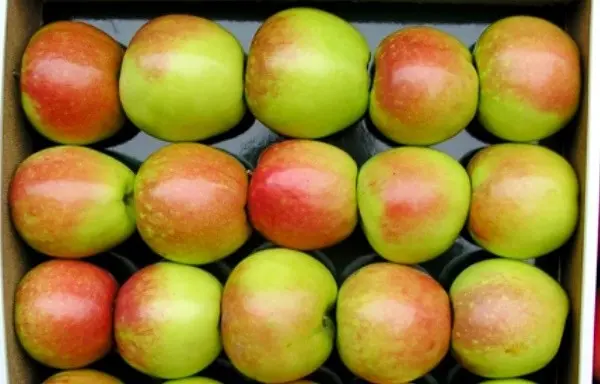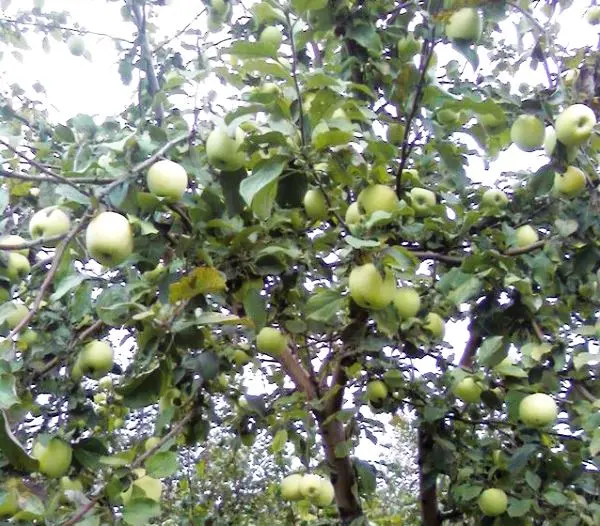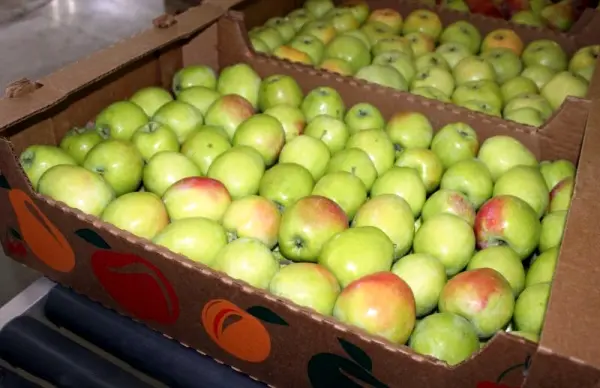Contents
Summer varieties of apples are good, autumn varieties are even better, and winter varieties are generally perfect! After all, who would refuse to eat a juicy and tasty apple on a cold winter evening, given that, in fact, there should not have been any left? For this reason, varieties of winter ripening have a special recognition among gardeners and just lovers of apples. One of these is the North Sinap apple tree, already well known in fruit circles and enjoying considerable popularity.
Variety Features
One name of the North Sinap apple variety already gives an idea of the areas in which it is most common. So, initially these apples were actively grown in the southern regions, especially in the Crimea. And then the variety gained recognition in the northern regions of Our Country, in particular, we are talking about the Volga region, the Central Black Earth region and Eastern Siberia.

The main varietal feature of this “northern” apple tree is that it is a late winter variety. Harvest, as a rule, is received at the end of September, and even closer to October. But that’s not all, because Sinap is also characterized by the fact that the fruits can be stored for quite a long time: they finally ripen just in time for winter, which is considered their wonderful distinguishing feature, and the fruits can retain all their taste and outwardly attractive qualities up to until May-June, and in some cases even longer. Historical facts can confirm this: at exhibitions in Moscow and Saransk, the described apple harvests of two different years were presented. So this variety really has something to brag about.
It is interesting that earlier (sometimes a similar opinion is found even now) the main winter variety in gardens, as a rule, was considered Antonovka. And this is despite the fact that its fruits are able to stay in perfect condition only until January, and sometimes less. But when the storage period for this variety was over, the Northern Sinap came into play: tasty, juicy, oblong and surprisingly elegant apples brought from the Crimea were served to the table by Moscow and St. Petersburg aristocrats, who were amazed by the taste characteristics of this variety.

Before proceeding to a detailed description of this apple tree, one should also indicate how it was born at all. So, this variety was bred by sowing the seeds of the Michurin variety Kandil-Kitayki by free pollination. It happened at the Research Institute of Horticulture. Michurin with the direct participation of S. Isaev, as well as his assistants: V. Zaits, Z. Ivanova and naturalists from the Biological Station. Timiryazev. By the way, a rather interesting story is connected with this, which happened at the initial stage of the construction of the Moscow-Volga canal.
The branch of the canal was supposed to pass near the garden, because of which the most valuable tree, from which the North Sinap variety originated, was transplanted, and in the confusion everyone forgot exactly where. But, fortunately, several cuttings were cut by one of the gardeners, otherwise this variety would not exist at all.

Now for a detailed description of the features of this variety. The tree is quite large and, moreover, vigorous. The crown is characterized by an average degree of thickening, has a pyramidal shape and large skeletal branches, from which, as a rule, the main number of fruit-bearing branches departs. Branches – lateral, thin, numerous, covered with fruit wood of a perennial type. The bark, which is located on the skeletal branches and trunk, is gray in color. The shoots are usually straight, have an average thickness and a brownish color. They are also slightly lowered and cranked. The number of lentils is small, besides they are small. The leaves are characterized by medium size and dark green color with a grayish tinge. In addition, they are quite wide, elongated, lowered, obovate in shape.
The fruits are relatively small (average weight is 120 g), have a glass or round-conical shape. The peel is smooth at first, but due to long storage becomes oily. The main color is greenish-yellow, the integumentary – a beautiful, brownish-red blush, located on the illuminated side of the fruit. Subcutaneous points are very clearly visible, as they are numerous, large, although light. The flesh may be pure white, but sometimes a greenish tint appears. The level of its density is medium. Also, the pulp is fine-grained, very juicy and refreshing, has a sour-sweet taste and a touch of light spice.

Video “Northern Sinap apple tree”
In the video you can see the North Sinap apple tree on a dwarf rootstock.
Advantages and disadvantages
The North Sinap apple variety is characterized by a set of a certain number of advantages and disadvantages. The first category includes the following factors:
- Precocity – this variety belongs to the intensive type, since the first fruits may appear already a couple of years after planting. This trend is especially relevant if the tree was planted in a low-growing rootstock.
- Winter hardiness.
- High level of productivity.
- High level of excellent taste.
- The ability of fruits to be stored for a long time.
As for the shortcomings, among them are:
- In the case of a good harvest, the commercial quality of the fruit may decrease.
- The fruits are often multidimensional.
- Removable maturity comes quite late.

All these factors make the variety of this apple tree in need of especially careful care, which consists in frequent pruning. This will ensure regular fruiting and the ability to keep the size of the tree within reasonable limits.
Northern Sinap is a unique and inimitable variety that has long been recognized by many gardeners and connoisseurs of fruit and garden art. In addition to its own development, this variety also became the ancestor of others: Sinap Orlovsky, Moscow later and winter. The harvest of Northern Sinap produces fruits that are unforgettable in terms of their taste, so the variety deserves further development.
Video “How to store apples for the winter”
The video gives tips on winter storage of late-winter apple varieties: when to pick fruits, how to harvest, how to store, etc.









